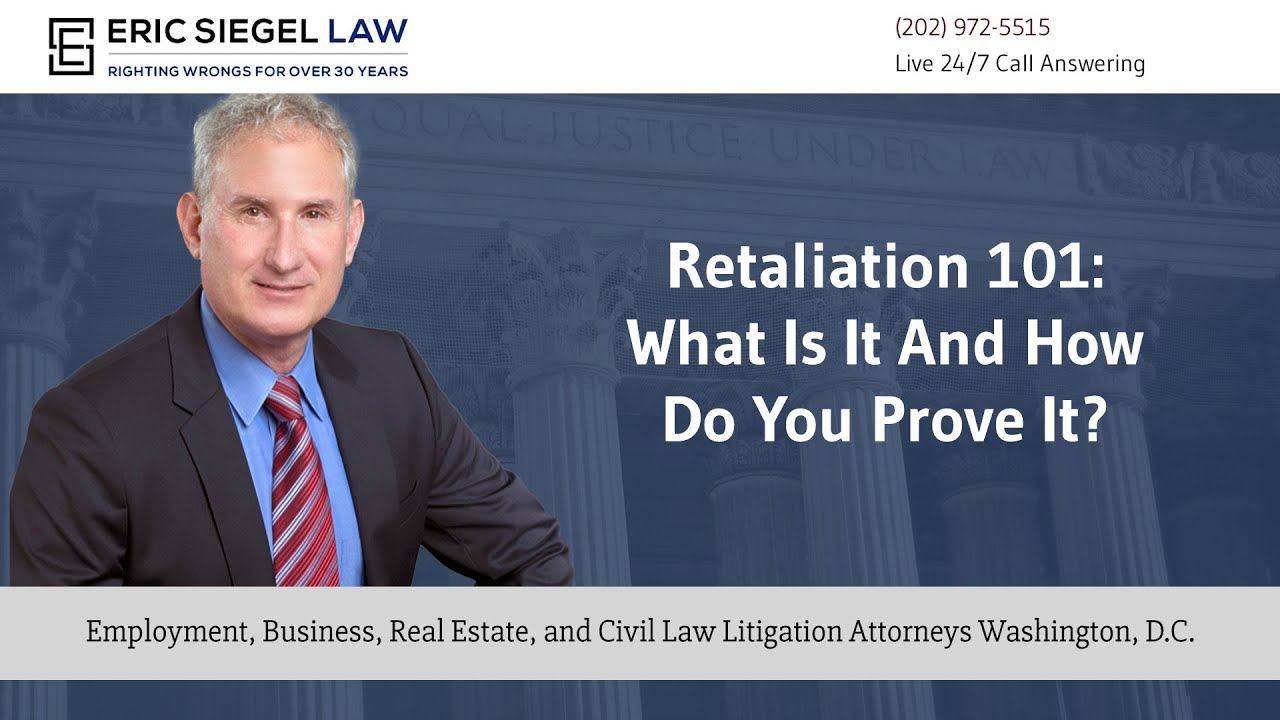
So, retaliation in the employment context occurs when an employer punishes an employee for engaging in legally protected speech or activity, and specifically, that would result in an adverse employment action taken against the employee. So, for example, termination, suspension, demotion, decrease in wages, or discipline. And those are covered by a number of federal, state, and local statutes.
In the context of a discrimination claim, for example, that would include, under Title VII of the Civil Rights Act, if you protest discrimination and the employer then retaliates against you by taking an adverse employment action against you, that’s against the law.
Now, the question is, how do you prove it? So, there’s three essential elements of a retaliation claim. First, is you have to prove that you engaged in protected activity, and to do that, you need to show that you made a complaint, or you voiced concern about illegal activity, or you protested discrimination verbally to your supervisor — things of that nature. Then, you have to prove an adverse action; we’ve already discussed what that is. And then, the last thing you have to do is establish a causal connection between the two.
That is sometimes it’s circumstantial evidence, by using temporal proximity between your speech and the adverse action. Or there could be what we call direct evidence, where an employer specifically says, “I don’t like what you just did — I’m doing this against you.” It’s very rare that that type of evidence exists, but your burden to prove, as a plaintiff, a connection between your activity and the adverse action taken against you.
